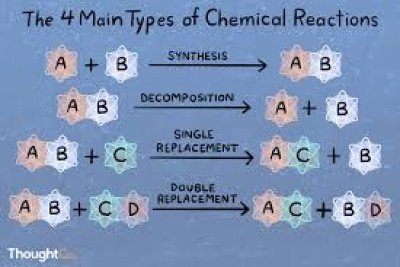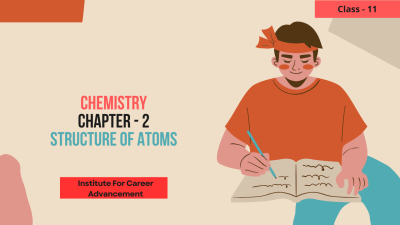Course description
In Class 12 Chemistry, you'll delve into the captivating world of coordination compounds – molecules with a central metal atom surrounded by a fascinating group of partners. Get ready to explore the structure, bonding, nomenclature, and properties of these unique entities!
The Central Stage: The Metal and Ligands
The Star of the Show: Imagine a metal atom at the center, like a charismatic leader. This central metal forms coordinate bonds with the surrounding molecules or ions.
The Supporting Cast: Ligands: These aren't just bystanders! Ligands are neutral molecules or ions that donate lone pairs of electrons to the metal, forming coordinate covalent bonds. Think of them as offering gifts (electrons) to the central metal.
A United Front: The Formation of a Complex Ion: The central metal and its bonded ligands come together as a complex ion, a tightly knit group within the molecule. This complex ion can be positively charged (cationic), negatively charged (anionic), or even neutral, depending on the charges of the metal and ligands.
Demystifying the Language: Nomenclature
Cracking the Code: Coordination compounds have a unique naming system. You'll learn to decipher the names based on the metal, ligands, and overall charge. It's like learning a special language to identify these complex molecules!
Beyond the Structure: Properties and Applications
A Rainbow of Colors: Coordination compounds often exhibit vibrant colors, a consequence of the way they interact with light. Get ready to explore the connection between structure and color!
Magnetic Marvels: Some coordination compounds possess fascinating magnetic properties. Understanding these properties helps explain their behavior and potential applications.
Catalysts for Change: Coordination compounds act as powerful catalysts, accelerating the rate of numerous reactions. This knowledge is crucial in various fields, from industrial processes to environmental remediation.
Why Study Coordination Compounds?
Understanding coordination compounds unlocks doors to various scientific disciplines:
Inorganic Chemistry: These compounds are a cornerstone of inorganic chemistry, providing insights into the behavior of metal ions.
Materials Science: The properties of coordination compounds make them valuable for developing new materials with desired functionalities.
Medicinal Chemistry: Many drugs and therapeutic agents are coordination compounds, playing a vital role in healthcare.
Environmental Science: Understanding the behavior of coordination compounds in the environment is crucial for developing strategies for pollution control and remediation.
দ্বাদশ শ্রেণীর রসায়নে, আপনি সমন্বয় যৌগগুলির চিত্তাকর্ষক জগতে প্রবেশ করবেন-একটি কেন্দ্রীয় ধাতব পরমাণু সহ অণুগুলি অংশীদারদের একটি আকর্ষণীয় গোষ্ঠী দ্বারা বেষ্টিত। এই অনন্য সত্তাগুলির গঠন, বন্ধন, নামকরণ এবং বৈশিষ্ট্যগুলি অন্বেষণ করার জন্য প্রস্তুত হন!
কেন্দ্রীয় পর্যায়ঃ ধাতব এবং লিগ্যান্ডস
দ্য স্টার অফ দ্য শোঃ কেন্দ্রে একটি ধাতব পরমাণু কল্পনা করুন, যেমন একজন ক্যারিশম্যাটিক নেতা। এই কেন্দ্রীয় ধাতু পার্শ্ববর্তী অণু বা আয়নগুলির সঙ্গে বন্ধনকে সমন্বিত করে।
সাপোর্টিং কাস্টঃ লিগ্যান্ডসঃ এরা শুধু দর্শক নয়! লিগ্যান্ড হল নিরপেক্ষ অণু বা আয়ন যা ধাতুতে একক জোড়া ইলেকট্রন দান করে, সমন্বিত সমযোজী বন্ধন গঠন করে। তাদের কেন্দ্রীয় ধাতুতে উপহার (ইলেক্ট্রন) দেওয়ার কথা ভাবুন।
একটি ইউনাইটেড ফ্রন্টঃ একটি জটিল আয়ন গঠনঃ কেন্দ্রীয় ধাতু এবং এর বন্ধনযুক্ত লিগ্যান্ডগুলি একটি জটিল আয়ন হিসাবে একত্রিত হয়, যা অণুর মধ্যে একটি শক্তভাবে বোনা গ্রুপ। এই জটিল আয়নটি ধাতু এবং লিগ্যান্ডগুলির আধানের উপর নির্ভর করে ধনাত্মক আধান (ক্যাশনিক) ঋণাত্মক আধান (অ্যানিয়নিক) বা এমনকি নিরপেক্ষ হতে পারে।
ভাষাকে বিকৃত করাঃ নামকরণ
কোড ক্র্যাকিংঃ সমন্বয় যৌগগুলির একটি অনন্য নামকরণ ব্যবস্থা রয়েছে। আপনি ধাতু, লিগ্যান্ড এবং সামগ্রিক চার্জের উপর ভিত্তি করে নামগুলি বুঝতে শিখবেন। এই জটিল অণুগুলি শনাক্ত করার জন্য এটি একটি বিশেষ ভাষা শেখার মতো!
কাঠামোর বাইরেঃ বৈশিষ্ট্য ও প্রয়োগ
রঙের একটি রংধনুঃ সমন্বয় যৌগগুলি প্রায়শই প্রাণবন্ত রঙ প্রদর্শন করে, তারা আলোর সাথে যেভাবে যোগাযোগ করে তার ফলস্বরূপ। গঠন এবং রঙের মধ্যে সংযোগ অন্বেষণ করতে প্রস্তুত হন!
চৌম্বকীয় বিস্ময়ঃ কিছু সমন্বয় যৌগের আকর্ষণীয় চৌম্বকীয় বৈশিষ্ট্য রয়েছে। এই বৈশিষ্ট্যগুলি বোঝা তাদের আচরণ এবং সম্ভাব্য প্রয়োগগুলি ব্যাখ্যা করতে সহায়তা করে।
পরিবর্তনের জন্য অনুঘটকঃ সমন্বয় যৌগগুলি শক্তিশালী অনুঘটক হিসাবে কাজ করে, যা অসংখ্য প্রতিক্রিয়ার হারকে ত্বরান্বিত করে। শিল্প প্রক্রিয়া থেকে শুরু করে পরিবেশগত প্রতিকার পর্যন্ত বিভিন্ন ক্ষেত্রে এই জ্ঞান অত্যন্ত গুরুত্বপূর্ণ।
কেন অধ্যয়ন সমন্বয় যৌগ?
সমন্বয় যৌগগুলি বোঝা বিভিন্ন বৈজ্ঞানিক শাখার দরজা খুলে দেয়ঃ
অজৈব রসায়নঃ এই যৌগগুলি অজৈব রসায়নের একটি ভিত্তি, যা ধাতব আয়নগুলির আচরণ সম্পর্কে অন্তর্দৃষ্টি প্রদান করে।
উপাদান বিজ্ঞানঃ সমন্বয় যৌগের বৈশিষ্ট্যগুলি পছন্দসই কার্যকারিতা সহ নতুন উপকরণ বিকাশের জন্য এগুলিকে মূল্যবান করে তোলে।
ঔষধি রসায়নঃ অনেক ওষুধ এবং থেরাপিউটিক এজেন্ট সমন্বয় যৌগ, যা স্বাস্থ্যসেবায় গুরুত্বপূর্ণ ভূমিকা পালন করে।
পরিবেশ বিজ্ঞানঃ দূষণ নিয়ন্ত্রণ ও প্রতিকারের জন্য কৌশল বিকাশের জন্য পরিবেশে সমন্বয় যৌগগুলির আচরণ বোঝা অত্যন্ত গুরুত্বপূর্ণ।



















